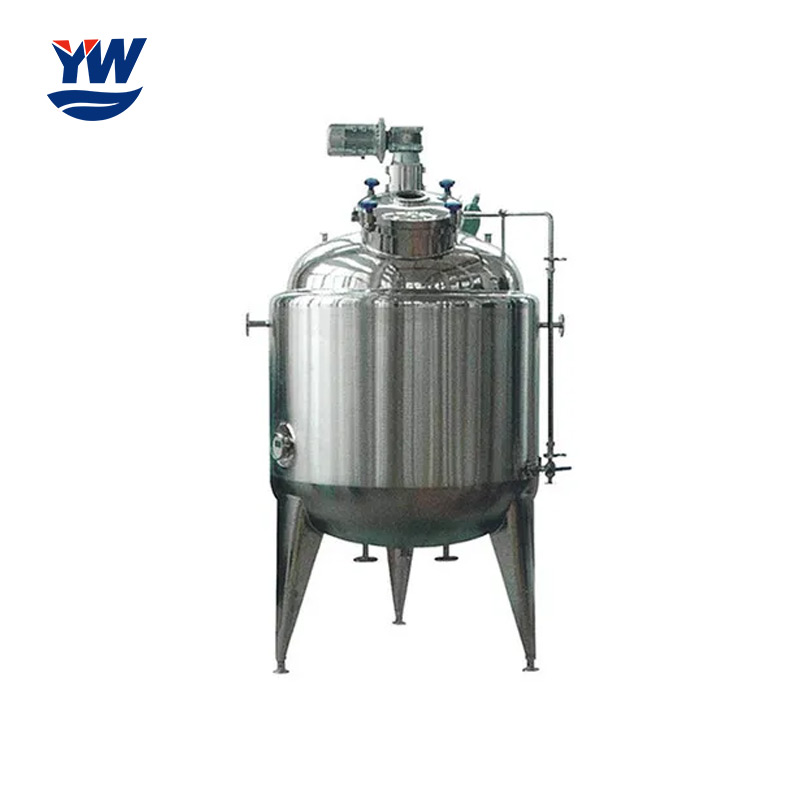
Models : SS Reactor
Material : Stainless Steel
Types : Manual / Fully Automatic
Application : Chemical Industry, Medicine, Food
Yuwei Stainless Steel Reactor is a comprehensive reaction vessel. The structural design and parameter configuration of the vessel are carried out according to different process conditions, so as to realize the heating, evaporation, cooling and low speed mixing reaction functions required by the process. According to different production processes, operating conditions and pressure requirements in the reaction process, the design requirements for vessels are also different. The design structures and parameters of reactor mode are different, that is, the structural styles of reactor mode are different, and they belong to non-standard container equipment.
Yuwei Stainless Steel Reactor is characterized by rapid heating, high temperature resistance, corrosion resistance, sanitation, no environmental pollution, no need for automatic heating of the boiler, convenient use, etc. It is widely used in petroleum, chemical industry, rubber, pesticide, dye, medicine, food, and to complete the process of vulcanization, nitrification, hydrogenation, alkylation, polymerization, condensation, etc. It is based on the premise of participating in the full mixing of reactants. For heating, cooling, liquid extraction, gas absorption and other physical change processes, mixing devices are required to achieve good results, and it can be designed for customers to process external coil reactors.
| Model | FY300 | FY400 | FY500 | FY600 | FY1000 | FY2000 | FY3000 | FY5000 | FY6000 |
| volume(L) | 300 | 400 | 500 | 600 | 1000 | 2000 | 3000 | 5000 | 6000 |
| Working liner pressure(Mpa) | ≤0.2 | ||||||||
| Pressure in jacket(Mpa) | ≤0.3 | ||||||||
| Motor power(KW) | 2.2 | 2.2 | 3 | 3 | 4 | 5.5 | 7.5 | 11 | 15 |
| Speed(rpm) | 18-200 | ||||||||
| Dimension(mm) | 900*2200 | 1000*2220 | 1000*2220 | 1150*2400 | 1150*2500 | 1400*2700 | 1580*3300 | 2050*4200 | 2500*500 |
| Heat exchange area(m2) | 2 | 2.4 | 2.7 | 3.1 | 4.5 | 7.5 | 8.6 | 10.4 | 20.2 |
The structure principle of the reactor: the reactor is composed of the pot body, pot cover, agitator, jacket, support and drive device, shaft seal device, etc. The material and opening can be determined according to the user's process requirements. The heating forms include electric heating, oil heating, gas heating, water heating (or cooling), open flame heating, etc. Jacket forms are divided into jacket type and outer half pipe type. Jacket oil heating type is equipped with a guide device. The mixing forms generally include paddle type, anchor type, frame type, screw type, scraping type, etc. High speed categories include decentralized impeller type, turbine type, high shear type and propeller type for customers to choose according to the process. Transmission forms include ordinary motor, explosion-proof motor, electromagnetic speed regulating motor, frequency converter, etc. The reducer includes cycloidal pin wheel type, worm wheel type, and planetary stepless speed change type. The shaft seal is a common water cooling packing seal, a combined PTFE packing seal and a mechanical seal. Discharging forms include ball valve and lower spreading valve.
Reactors are widely used in petroleum, chemical industry, rubber, pesticide, dye, medicine, food and other fields. They are pressure vessels used to complete vulcanization, nitrification, hydrogenation, alkylation, polymerization, condensation and other processes, such as reactors, reaction pots, decomposition pots, polymerization pots, etc; The materials generally include carbon manganese steel, stainless steel, zirconium, nickel base (Hastelloy, Monel, Inconel) alloy and other composite materials.